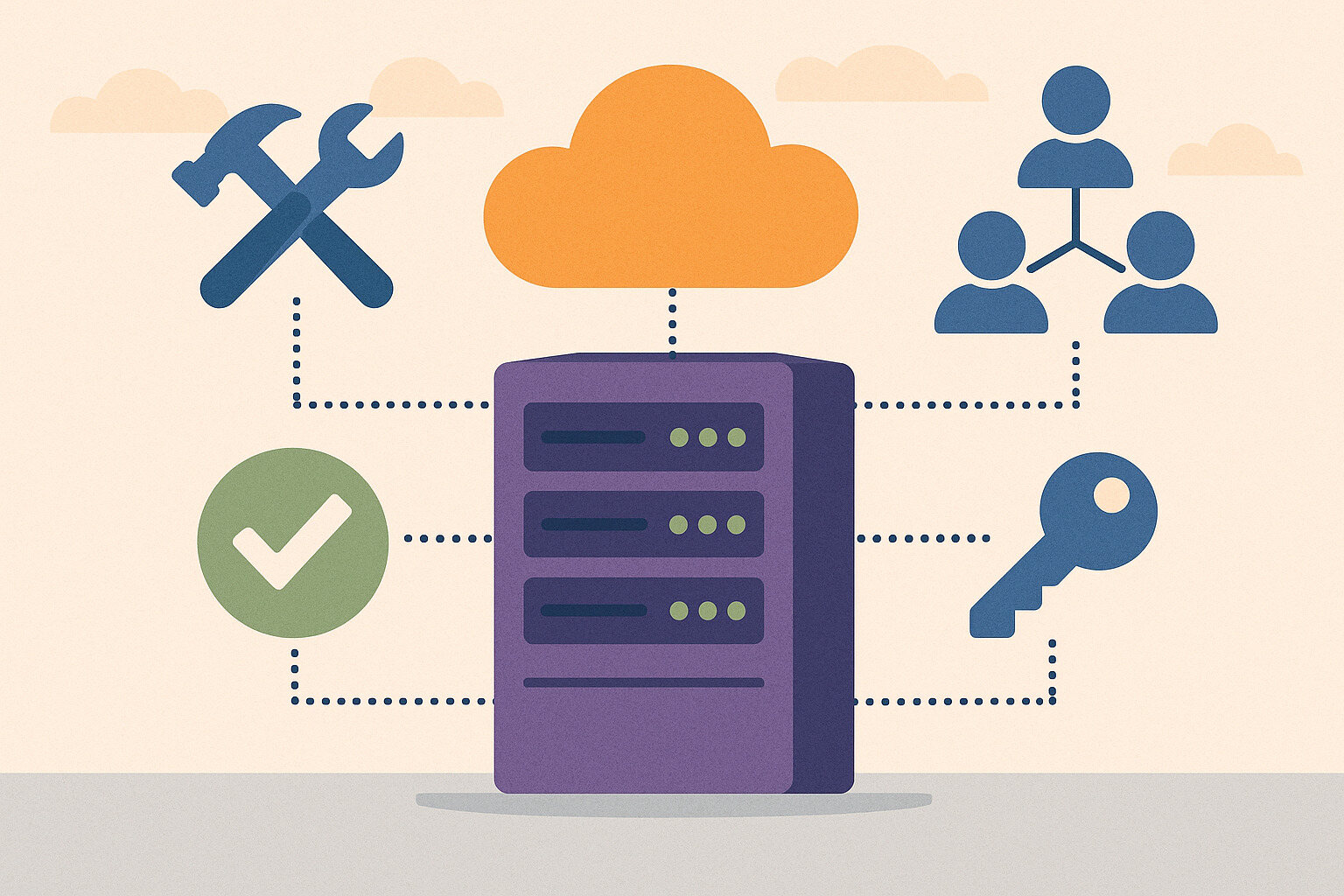The Crucial Role of Middleware in Grid Computing
Grid computing is a powerful tool for projects that require simultaneous data processing from various locations. However, before it can operate smoothly, a reliable middleware—software that serves as the bridge between the user and system resources—must be properly set up. At first glance, installing and configuring middleware might seem simple, but in reality, it presents several technical challenges. If left unresolved, these issues can delay an entire project or waste valuable resources.
Incompatible System Requirements
One of the initial hurdles is incompatibility between the operating system, libraries, or dependency versions and the middleware being used. Middleware that works on Linux may not run on Windows without proper porting or configuration.
When multiple nodes in the grid each have their own system setup, integrating middleware becomes more complex. Even slight differences in kernel version or compiler can trigger errors. For instance, a university project suddenly halted its simulations because one node lacked a required library—even though the rest were working fine.
To prevent such issues, admins often create standard installation scripts. However, manual inspection of each component’s configuration is still necessary to ensure compatibility.
Lack of Documentation or Incorrect Guides
Not all middleware tools come with clear or user-friendly documentation. Open-source projects, especially those still in experimental stages, often lack detailed instructions. This leads to misconfiguration or prolonged setup times.
One research team, for example, spent three weeks trying to make a new middleware tool work. They later discovered that the official documentation had omitted a crucial installation sequence. Furthermore, the configuration examples were outdated and incompatible with the latest release.
If there is no active support community, the situation worsens. That’s why it’s important to assess how well-supported a middleware tool is—check the forums, official site, and available guides before deciding.
Slow Resource Discovery and Allocation
In grid computing, it’s essential for the middleware to identify which nodes have available resources. If resource discovery is slow, task execution is delayed. Sometimes, tasks are even assigned to overloaded nodes due to poor allocation.
Delays in discovery can stem from network latency or poorly configured monitoring modules. In one science lab setup, job requests stalled for five minutes before middleware could determine where to assign them.
Solutions include proactive monitoring tools or custom configurations in the resource broker. But if the middleware lacks such flexibility, it becomes a system bottleneck.
Authentication and Security Protocol Issues
Grid computing often uses federated systems—where nodes are managed by different organizations or departments. This makes authentication protocols sensitive. A small mistake in certificate exchange or credential setup can disrupt the entire grid connection.
Many middleware systems rely on SSL/TLS certificates, OAuth tokens, or local authentication services. If nodes have mismatched security configurations, the middleware may fail to connect. In some cases, new keys must be generated for each node.
Setting up the authentication layer clearly and carefully is crucial. Otherwise, it can lead to delays or even security breaches if unauthorized users gain access.
Poor Logging and Error Reporting
When middleware fails, effective logs are essential for quick troubleshooting. However, not all middleware provides clear or detailed error reports. Sometimes the logs are cryptic and hard to interpret.
For instance, a system log that only shows “Error code 105” offers no clue about the actual issue. In one real-world case, admins spent four days tracing a problem that turned out to be a simple directory permission issue.
Without proper logging, administrators struggle to trace the origin of failures. That’s why it’s vital to choose middleware with structured logging, log rotation, and an alert system.
Lack of Load Balancing or Job Scheduling Strategy
Without a robust job scheduling strategy, some nodes end up overworked while others stay idle. This leads to unbalanced resource utilization and system slowdowns.
While some middleware includes a built-in scheduler, not all can handle real-time load changes. At one data analysis center, tasks kept getting assigned to the same server while three others stayed idle. Investigation revealed there was no active load-balancing algorithm.
Such problems may go unnoticed initially. But as user numbers and data volume increase, poor scheduling becomes a serious issue. Regular reviews of scheduling logic are essential.
Limited Middleware Scalability
Some middleware works fine in small setups but struggles when scaled up. It might run well with 10 nodes but fail or slow down with 100 or 1,000.
Scalability issues may stem from hardcoded limits, inefficient protocols, or poor data handling. Some projects have had to downgrade their systems because the middleware couldn’t support their growing operations.
It’s important to plan for growth and choose middleware with a clear development roadmap. Regular performance testing as the grid expands can prevent future breakdowns.
Incompatibility with Diverse Programming Environments
Grid systems often involve various programming languages and tools. If the middleware isn’t compatible with different APIs or environments, it hinders integration.
Some middleware supports only Java or Python. If parts of the system use C++ or R, additional bridges or wrappers are needed—adding complexity and increasing error risks.
A university research group had to convert scripts from Python to Java because their middleware didn’t support Python-based jobs. The time and effort spent on migration could’ve been avoided with the right tool from the start.
Poor Support and Maintenance
Even the best middleware can become obsolete if it lacks regular updates or support—especially when security vulnerabilities or OS compatibility issues arise.
Some middleware is abandoned by its developers. When problems occur, users are left with outdated forum posts or manual patches. In fast-paced industries, relying on unsupported software is risky.
Middleware with active development, updated changelogs, and engaged user forums is far more reliable. There should also be a clear way to report bugs and receive updates—ideally on a quarterly basis.
Proper Preparation Is Key to Successful Middleware Setup
Grid computing offers many benefits, but behind them lie significant challenges—especially in middleware setup. System compatibility, security, job management, and support infrastructure all play a role in a project’s success.
Perfection isn’t required from the start. But having a clear plan, understanding the limitations of your tools, and maintaining open communication with developers and users greatly increases the chances of a smooth setup.
Learning from common issues brings you closer to building an efficient, long-lasting grid computing system.



